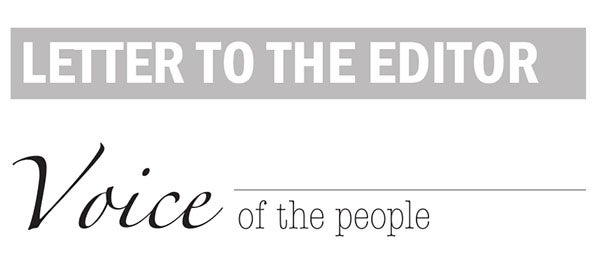Do your part to ‘flatten the curve’ of COVID-19 and save lives
Published 6:44 pm Monday, March 16, 2020
You may have heard the term “flatten the curve” in recent days, concerning the COVID-19 pandemic. It’s a concept that everyone needs to be familiar with, because it’s the key to potentially saving hundreds of thousands of lives during this crisis — and it will no doubt be key to keeping our cool and handling future threats of this nature, as well.
Humanity has reaped huge benefits over the past century from medical advancements that have cured many killer diseases and made countless others treatable, rather than fatal. But a major area of weakness is new diseases.
It takes time to study new diseases and figure out what treatments work or if a vaccine can be effective. In the case of potentially fatal and fast-spreading viruses like COVID-19, the time it takes to understand the disease is much longer than the time it takes the disease to spread to pandemic levels.
Flattening the curve of a new disease buys humanity extra time to deal with the problem using the medical advancements and capacities we already have available. Curve-flattening actions don’t necessarily prevent people from catching a new disease, but they cause the spread to happen more slowly, meaning fewer people are sick at the same time.
The peak number of people infected at once matters a lot more than it might initially appear. That’s because our health care system has certain maximum capacities that limit how many people it can treat at any one time.
By charting how many people are sick with a disease on a timeline, you can easily see the problem. During previous pandemics, like the 1918 influenza that killed more than 50 million people worldwide, the “curve” of infections and deaths might look like a tall building — without curve-flattening interventions it shoots up exponentially as the sickness spreads as fast as it can.
The curve can be similarly scary even if interventions are put in place but not quickly enough. According to the Washington Post, when the 1918 flu first hit Philadelphia, it took more than two weeks for “social distancing” measures to be put in place. In St. Louis, measures were put in place two days after the first case. Philadelphia’s death rate peaked at more than 250 per 100,000 people; St. Louis’ death rate peaked at just over 50.
Without curve-flattening strategies such as social distancing, the number of people in need of medical care can quickly surpass the number of beds, doctors, nurses and medical equipment available, leaving thousands without a chance to recover.
Humanity fares much better in such a scenario if the rate of transmission can be slowed, even if the same number of people are ultimately infected.
Precautions that would seem extreme at other times, such as canceling everything sports-related and closing all restaurants, are actually necessary and effective steps toward flattening this curve — especially when they’re put in place early. Self-quarantining, avoiding group meetings and staying several feet away from others in public are also effective social distancing steps individuals can choose to take.
Think about it this way: Imagine a city’s hospital can take care of 1,000 patients at most. But a pandemic disease arrives and spreads unmitigated, infecting a total of 50,000 people over three months. At the worst moment, 15,000 people are sick at the same time.
Not all of those people will need to be hospitalized, but even if just one in 10 does need the hospital, at the worst moment, there will be 500 untreated people who are extremely sick and may die. It’s not hard to imagine the panic and chaos such a scenario could create.
Now imagine that the disease still infects 50,000 people, but those people are interacting less frequently — because of smart institutional and individual choices. The disease runs its course over six or eight months instead of three, and only 7,500 people are simultaneously sick at the worst moment.
The 750 people who need a hospital bed at that moment will no doubt place an enormous workload on the hospital, but not a workload beyond the hospital’s maximum capacity.
The curve of this hypothetical pandemic lasts longer — it looks more like a rolling hill than a skyscraper. But it never exceeds the dangerous red line of the health care system’s capacity. Untreated patients and unnecessary deaths — and the panic and chaos that come along with those problems — never have to enter into the equation.
That is why everyone ought to be doing their part to flatten the curve. We don’t know yet just how far COVID-19 will spread or how many people will be killed. But we do know the speed with which we allow the virus to move will directly affect the total number of deaths it causes.
For more information about best practices and current information on the spread of COVID-19, please visit cdc.gov/coronavirus/2019-ncov or kycovid19.ky.gov.





